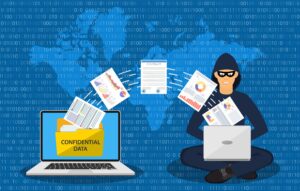
Email is the most widely-utilized communication tool for both personal and business purposes.
- Spam targets email recipients with multiple mail messages.
- Spoofing techniques are used to spoof the email and websites
- Malware can be embedded inside the email and downloaded to a victim’s computer.
- Phishing attacks bait the victim to click on and open a link that is malicious to activate malware such as ransomware and spyware or redirect to another bogus site created to gather information (1 in 10 individuals will respond).
Email Best Practices
- Think twice before opening any email links or attachments.
- Use anti-malware protection that is updated automatically.
- Make sure your internet browser is updated because it will check for fake websites in case you’ve been redirected by a malicious link.
Test your knowledge of phishing attack methods and signs by taking the quiz!
Learn how to quickly identify phishing emails and protect yourself from cyber scams!
- Always open up your emails in plain text, without any downloading or processing of any content.
- sometimes you see a kind of urgency/importance in the email asking you to do something quickly so the attacker can get access to your system.
- The spelling and the grammar are inaccurate and inappropriate.
- Follow your feeling and ask yourself, is there something wrong with the email?
- Always read the subject line: it might be irrelevant or mismatched with the content of the email.
- Check when the email was received (date and time), legitimate email should be sent through official working hours.
- Some emails have a very long hyperlink to click it to open a new tab in your browser, with no content in the body, that’s a great sign to avoid that phishing email.
- Typo Squatting (fake URL) email. where one character is different from the official known link or website.
- Email Distribution list (LS), email send to a group of people and you’re on that list and you don’t know the other recipients.
